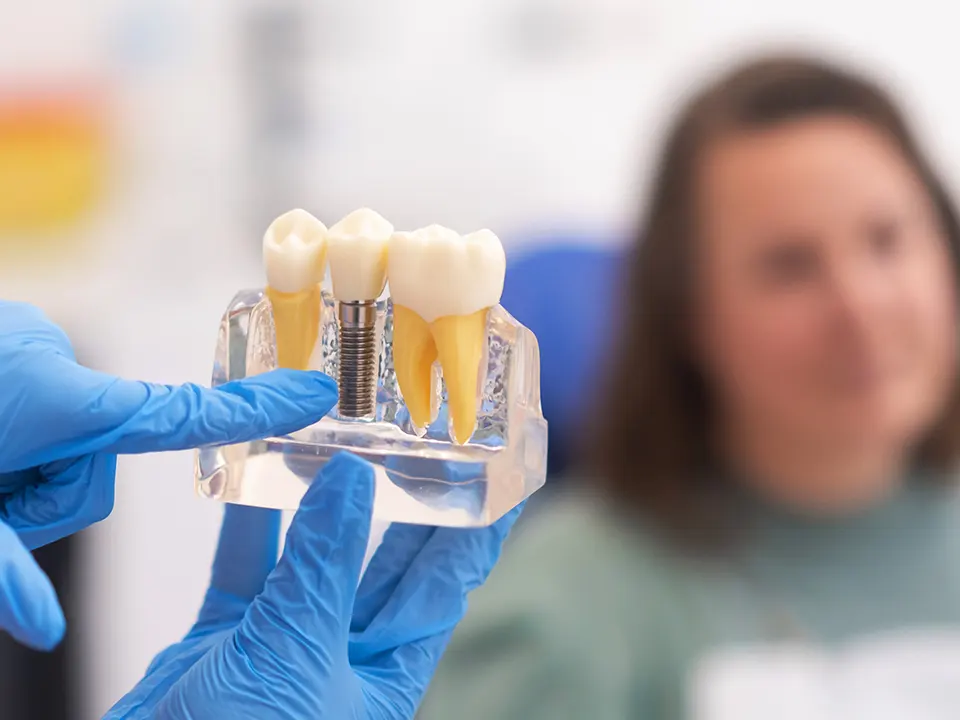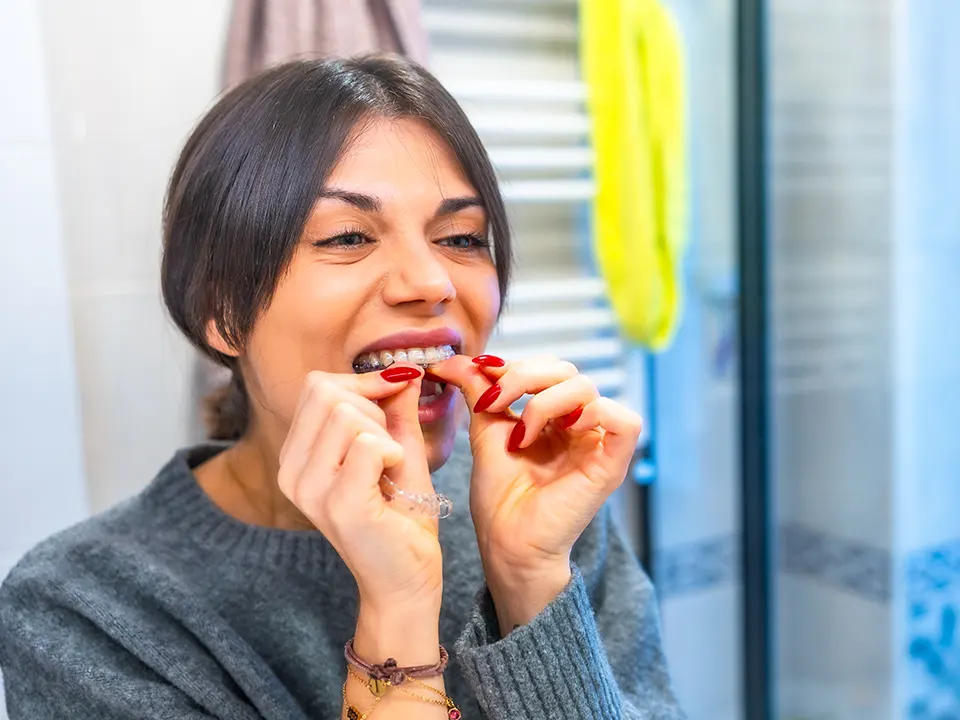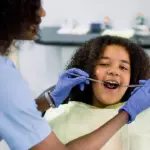
Searching for a Kids Dentist Near Me? Here’s What You Need to Know
April 16, 2025
Top 6 Signs of Cavities And What to Do About It
June 16, 2025Finding the right toothbrush shouldn’t feel like you need a Master’s Degree. Here’s how to pick one that actually suits you.
If you’re overwhelmed by the options in the dental care aisle, you’re not alone. The best toothbrush for you depends on a few things: your oral health needs, your lifestyle, your preferences, and sometimes, your bathroom setup! Whether you need a gentle option for sensitive gums, a toothbrush that works around braces, or something travel-friendly and low-waste, there’s a perfect brush out there for you.
Here’s a breakdown to help you choose the right one, with real-world suggestions, brand names you can buy in Canada (lots are even made in Canada!), and some helpful tips on toothpaste, storage, and replacement timing.
Manual vs. Electric Toothbrushes: What’s the Difference?
Manual Toothbrushes
Manual toothbrushes have been around for a long time, and for good reason. They’re effective, inexpensive, and widely available. A good manual brush, paired with proper brushing technique, can absolutely maintain strong oral health
Benefits of Manual Toothbrushes:
- No need for charging or batteries; just pick it up and go.
- Lightweight and easy to pack for travel.
- Affordable, often sold in multi-packs.
- Tons of options in bristle softness, handle shape, and eco-materials.
- Easier for kids and seniors who might find electric models intimidating.
But Here’s the Downside: Manual brushes rely heavily on your technique. If you’re brushing too hard, too fast, or missing areas, you’re not getting the clean you need. Plus, people tend to rush manual brushing, which means plaque can build up in hard-to-reach places.
Who Might Prefer a Manual Brush:
- Students on a budget.
- Frequent travellers or backpackers.
- Minimalists or zero-waste households.
- People with great brushing technique and healthy mouths.
Electric Toothbrushes
Electric toothbrushes—especially oscillating toothbrushes and sonic toothbrushes—use motorized movement to do most of the work for you. If you’ve ever tried one, you know the feeling: smoother teeth, less effort, and often, more thorough results. If you’re looking for something more high-tech for your oral care, there’s no shortage of options on the market today.
Types of Electric Toothbrushes:
Oscillating/Rotating Heads – These move in a circular motion, scrubbing one tooth at a time.
- Example: Oral-B Pro 3000
Sonic Brushes – These vibrate at ultra-high speeds, creating tiny bubbles that help remove plaque even beyond where the bristles touch.
- Example: Philips Sonicare 4100
Features to Look For:
- Pressure sensors that will alert you if you’re overbrushing.
- Multiple cleaning modes (like “sensitive,” “gum care,” “whitening”) that allow for a more customized experience.
- Timers to keep you brushing for the recommended two minutes.
- Smart brush heads that alert you when it’s time to change them.
- Charging stands with sleek designs for bathroom counters.
- Travel case options for hygienic portability.
Benefits:
- More effective plaque removal for many users.
- Easier to use for kids, seniors, or those with mobility issues.
- Gentle on gums when used with a soft brush head.
- Can improve brushing consistency and time with cool features like minute timers.
Drawbacks:
- More expensive upfront.
- Requires charging or battery replacements. Since they come with a stand that does the charging, battery life shouldn’t be too much of a hassle though!
- Can be bulky for small counters or travel.
Who Might Prefer Electric:
- Anyone with dexterity issues (e.g., arthritis).
- People with braces or dental appliances.
- Patients who struggle with plaque buildup.
- Busy people who need help brushing properly.
Choosing a Toothbrush Based on Your Needs
Choosing the best toothbrush really comes down to what’s happening in your mouth and your life. You might even want to purchase different kinds of toothbrushes for different situations, like a manual toothbrush for travel or an electric one at home. Let’s break down more specific recommendations, based on oral health, preferences and age.
Sensitive Gums or Teeth
If brushing feels like a contact sport for your mouth, you need extra-gentle tools. Tooth brushing can be good for gums, as stimulation helps with blood flow, but you’ll be less inclined to brush if you’re in pain. This is why softer bristles and electric toothbrushes with sensitive modes can be of great help!
Best Brush Types:
- Sonic toothbrushes with a sensitive mode.
- Manual brushes labelled ultra-soft or “for sensitive gums.”
- Choose a brush head with soft bristles and rounded tips.
Pro Tips:
- Use a toothpaste made for sensitivity; this can make a huge difference in reducing sensation.
- Let the brush do the work—don’t scrub! It’s not true that the harder you brush your teeth, the cleaner they get. It’s more about going over the same area multiple times to ensure that no area is missed. That’s why dentists recommend brushing for at least two minutes.
- Avoid whitening toothpastes or toothpastes made with charcoal, which can be abrasive.
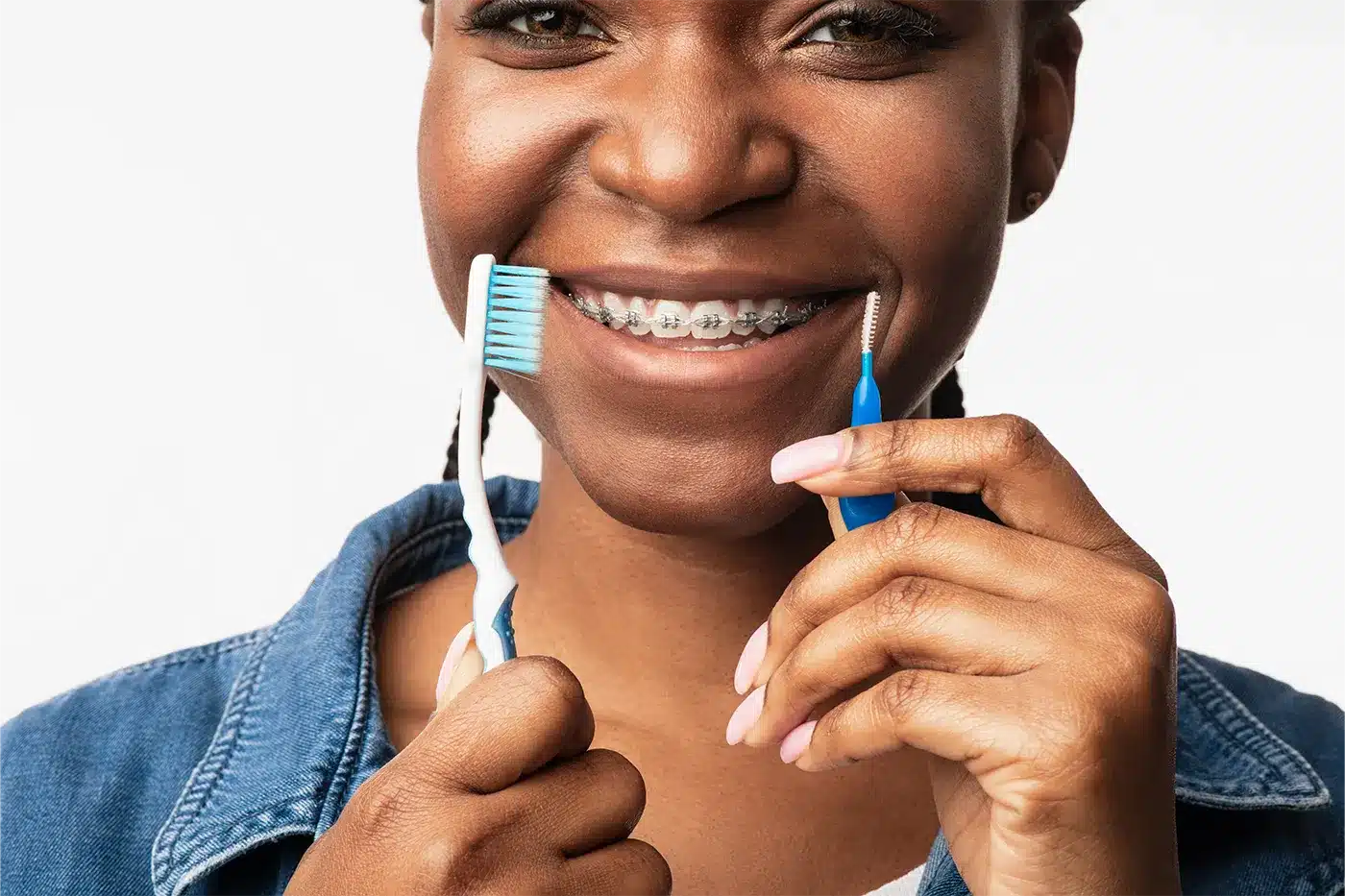
Braces or Metal Appliances
Metal brackets and wires can be like plaque magnets. You need something that gets in those tight spots. This is why considering alternatives, like a Waterpik, can be super helpful. While toothbrush selection is important for braces, there’s a lot you can do with flossing to help keep your teeth clean too.
Best Brush Types:
- Oral-B Pro series with ortho brush heads. These are designed specifically for brace wearers and have great reviews.
- Waterpik Sonic-Fusion, which combines brushing and flossing. Using water to help blast debris and bacteria from teeth means you can really get into all the tiny spaces around your braces.
- Travel-sized interdental brushes for on-the-go cleaning. These are small and handy to keep in your car or purse.
Pro Tips:
- Brush after every meal to prevent buildup.
- Replace brush heads more often than you normally would, since they wear down faster with braces.
- Avoid sticky or gummy candies (sorry!).
Children Under 10
The goal here is twofold: encourage brushing habits and keep it gentle on young teeth. Choosing toothbrushes that feel good, and maybe even look cool, will help to establish a positive feeling around oral hygiene.
Best Brush Types:
- Electric brushes with timers and fun themes (Oral-B Kids, Colgate Hum Kids).
- Manual brushes with small heads and soft bristles that won’t hurt small mouths.
- For very young kids, use a brush with a large handle for adult assistance.
Pro Tips:
- Supervise brushing until age 7–8. At this point, children should have a good understanding of how to brush and floss.
- Use a pea-sized amount of fluoride toothpaste (or a grain of rice size for under 3). Toothpastes come in all kinds of fun flavours, so let your child pick what they want to help get their buy-in!
- Make it fun; play music, use a brushing app, or reward consistency.
Eco-Conscious or Minimalist Users
If sustainability is a priority, there are solid toothbrush options that reduce waste or use materials that are less harmful to the planet than plastic.
Best Brush Types:
- Bamboo toothbrushes (OLA Bamboo, Brush with Bamboo).
- Manual brushes with replaceable heads (like nada).
- Rechargeable electric toothbrushes with recyclable brush heads.
Pro Tips:
- Swap brush heads instead of full brushes to help create less waste.
- Avoid plastic packaging when possible.
- Store bamboo brushes upright so they dry properly.
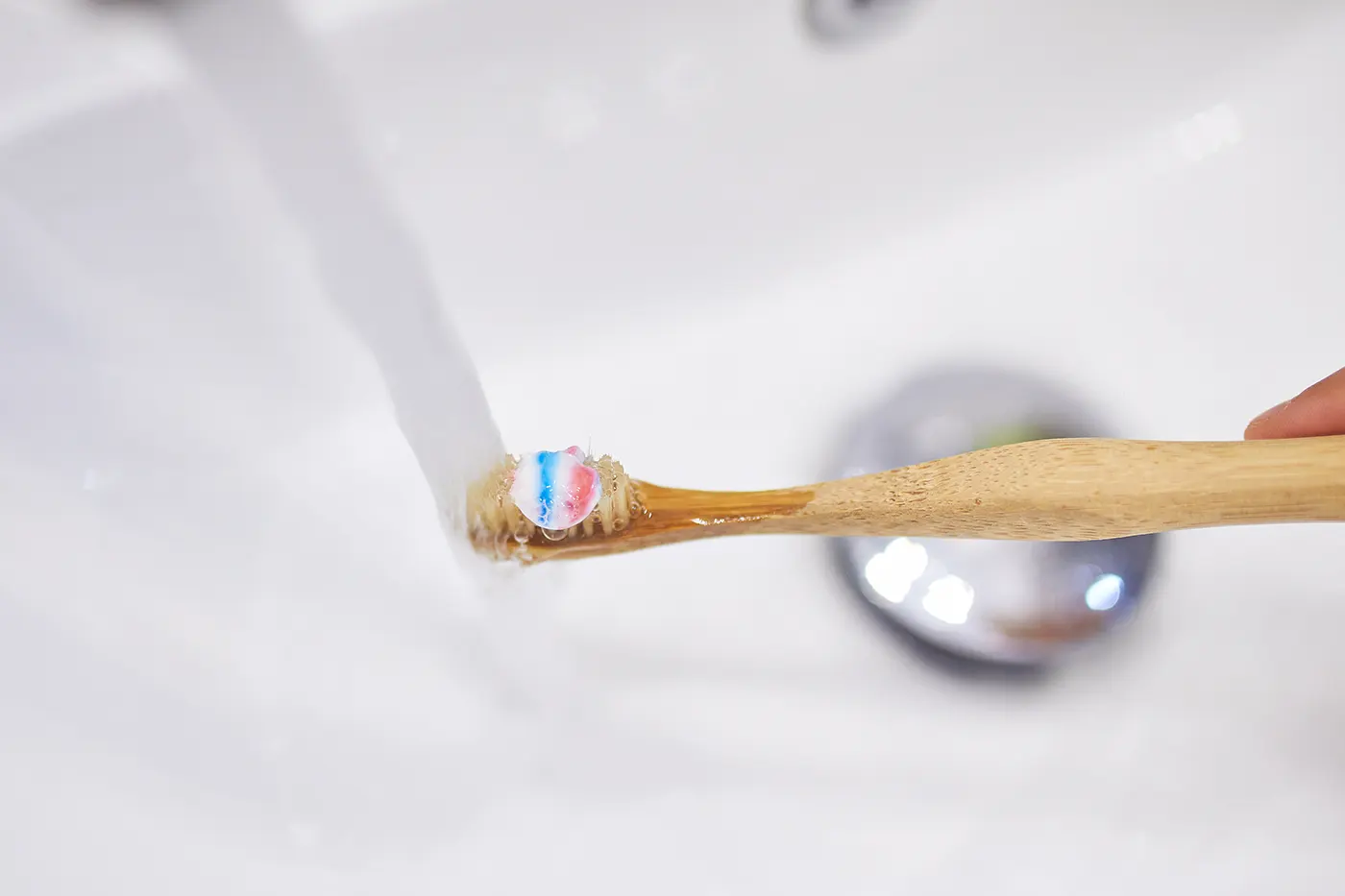
What Makes a Toothbrush Eco-Friendly?
If you’re looking to reduce plastic waste and make greener choices in your daily routine, your toothbrush is a great place to start. Most standard toothbrushes are made from petroleum-based plastic and can take hundreds of years to break down in landfills. Eco-friendly alternatives use more sustainable materials and are often recyclable or compostable.
Better Materials to Look For:
Bamboo Handles:
- Bamboo is fast-growing, renewable, and biodegradable. Many bamboo toothbrushes are compostable (at least the handle), making them a great low-waste option. Just remove the bristles before composting.
Replaceable Brush Heads:
- Instead of tossing the whole toothbrush, some eco-friendly brands let you keep the handle and just replace the head. This reduces overall waste and usually comes with recyclable packaging.
Bioplastics or Plant-Based Handles:
- Some companies are developing handles made from corn starch or other plant-based plastics. These still look and feel like traditional toothbrushes but have a smaller environmental footprint.
Recyclable Nylon Bristles:
- While most toothbrush bristles are made from nylon (which isn’t compostable), some brands use recyclable nylon-4, which is considered more environmentally friendly. It’s not perfect, but it’s a step in the right direction.
What Comes in the Box? Helpful Extras to Look For
When shopping for the best toothbrush, don’t forget to check what’s included. Some electric models come with travel cases, extra brush heads, and even charging stands with USB compatibility—super handy if you’re always on the go. More advanced models might offer smart tracking apps that analyze your brushing habits, while others keep it simple with a built-in timer and one button. These little add-ons can make a difference in how consistently and effectively you brush your teeth.
Don’t Forget Toothpaste!
Toothpaste plays a crucial role in oral health; it’s not just a minty bonus. The wrong formula can irritate gums, strip enamel, or miss key ingredients.
Choosing the Right One For You:
For Sensitivity:
- Sensodyne Rapid Relief
- Colgate Sensitive Pro-Relief
- These work by calming nerves inside the teeth and protecting enamel.
For Cavity Protection:
- Crest Pro-Health
- Tom’s of Maine with Fluoride
- Look for fluoride as the main active ingredient.
For Whitening (Occasional Use):
- Hello Activated Charcoal Toothpaste
- Colgate Optic White
- Use sparingly to avoid wearing down enamel.
Natural or Fluoride-Free Options:
- Green Beaver
- Radius Organic Toothpaste
- Be cautious with fluoride-free pastes if you’re cavity-prone.
Ask your dental hygienists during cleanings what they recommend based on your oral history.
Smart Storage for Small Bathrooms
Your toothbrush deserves better than being tossed in a drawer. If you’re tight on space, here are some clever storage tips:
Toothbrush Storage Hacks:
- Wall-mounted holders: These stick on tiles or mirrors and hold multiple brushes.
- Toothbrush covers with vents: Great for travel or keeping things tidy in drawers.
- Magnetic strips: Use a magnetic bathroom organizer to keep things off the counter.
- Drawer caddies: Store electric toothbrushes and accessories neatly in one place.
- Charging stands with cord organizers: Keep everything functional and aesthetic.
General Tips to Keep Things Hygienic:
- Always store toothbrushes upright and let bristles air dry.
- Store them away from the toilet to avoid airborne bacteria (sorry for the image).
- Don’t share toothbrush holders unless cleaned regularly.
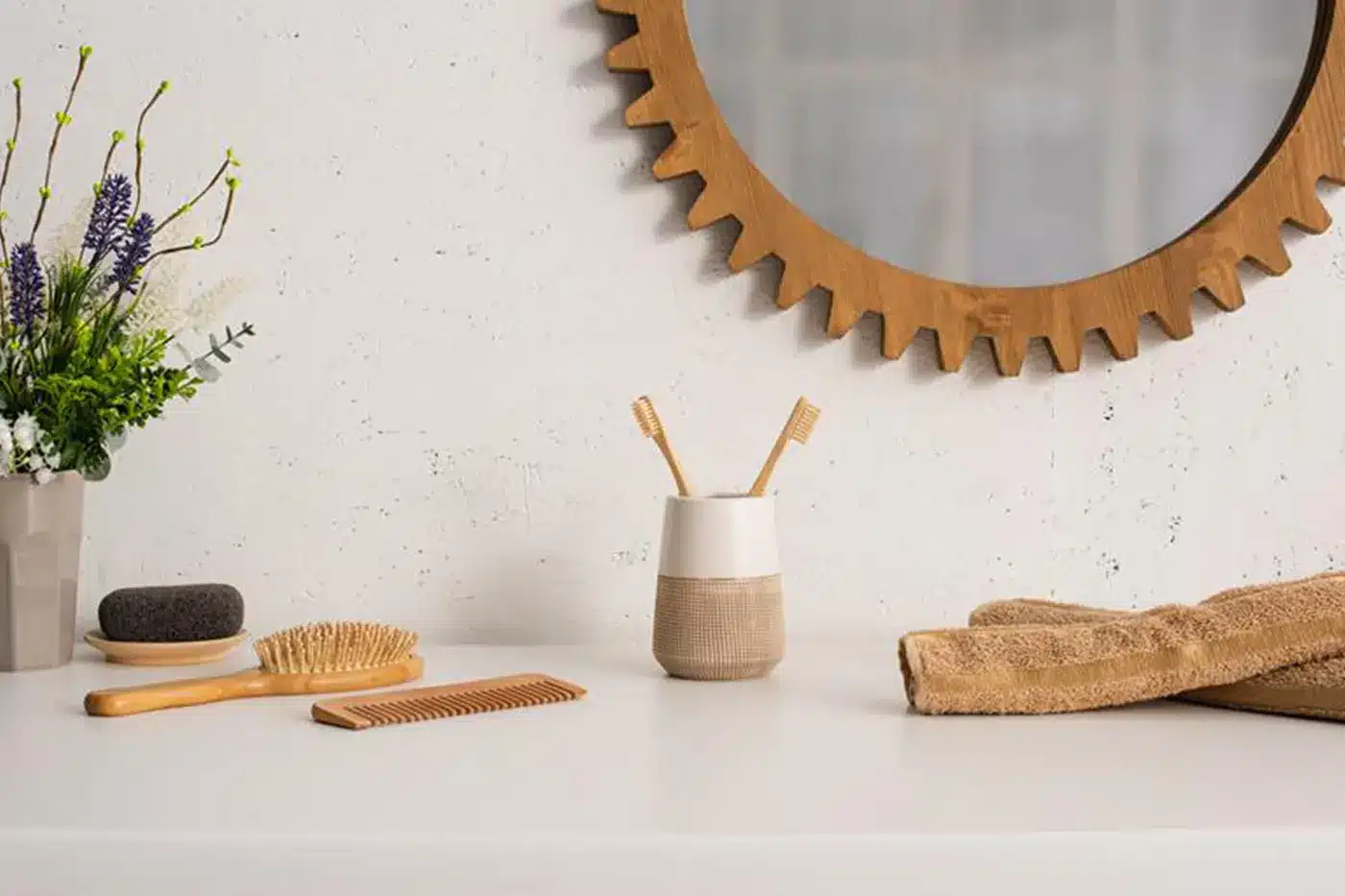
How Often Should You Replace Your Toothbrush?
This might be the most overlooked part of brushing, and one of the most important. Regular swaps ensure that your toothbrush is performing effectively, which is the whole point of brushing your teeth right?
General Rule: Every 3 Months
That’s true whether you’re using a manual brush, sonic brush, or rotating electric toothbrushes. Over time, bristles wear down and can’t clean effectively. Plus, they can harbour bacteria.
Replace Sooner If:
- Bristles are fraying or curling outward.
- You’ve just been sick (cold, flu, etc.).
- The brush has touched a questionable surface.
- You drop your brush on the floor or sink.
- You use high pressure and wear down the bristles early (although, as we mentioned earlier, we don’t recommend this technique).
For Electric Brushes:
- Set a reminder or use brands with built-in alerts.
- Brands like Oral-B Pro and Philips Sonicare sell replacement heads in multipacks so you can always have a backup handy.
- Consider a subscription service so you never forget.
For Kids:
- Monitor closely—children are hard on brushes.
- Replace every 2–3 months or when it starts to look worn.
- Make it part of the routine; new season, new brush!
How At-Home Hygiene and Dental Appointments Work Together
While brushing at home is essential for day-to-day oral hygiene, it’s not a replacement for professional cleanings. Even the best toothbrush can’t remove hardened tartar or clean below the gumline. That’s where regular appointments with your dental hygienist come in. At Regehr Family Dental, we help catch small issues before they become big problems and give your teeth the deep clean they deserve. Think of it as a team effort; your toothbrush handles the daily grind, and we handle the fine-tuning. Both are key to keeping your teeth and gums healthy for the long haul.
Final Guidance
Choosing the best toothbrush isn’t about the fanciest features; it’s about what fits your life. Think about your brushing habits, your oral health goals, your budget, and yes, even your bathroom layout. The right toothbrush makes a real difference in keeping your teeth and gums healthy and happy.
Still unsure what to pick? Ask us at your next visit. We’re happy to help you find the perfect brush for your smile.

